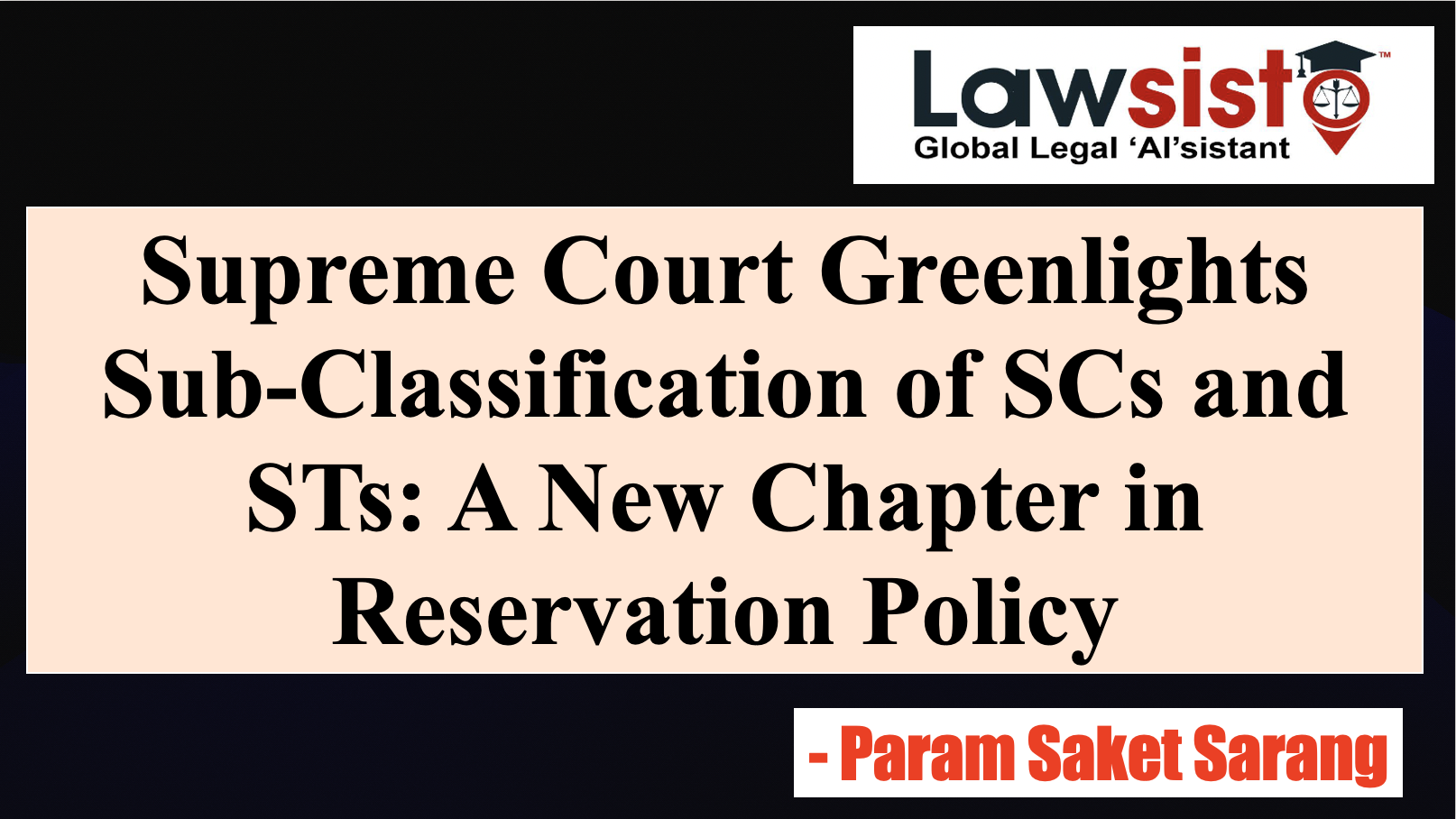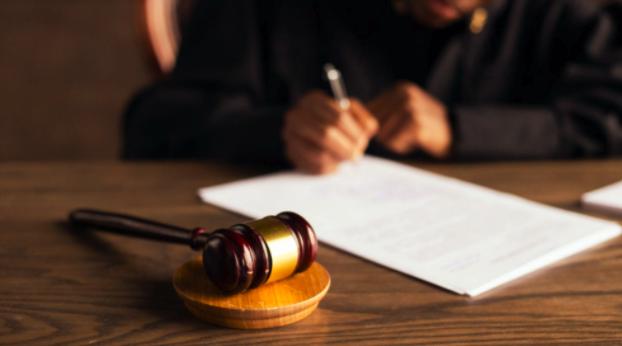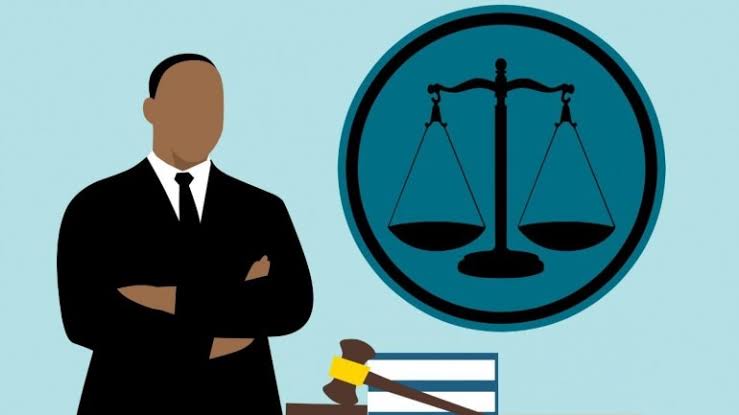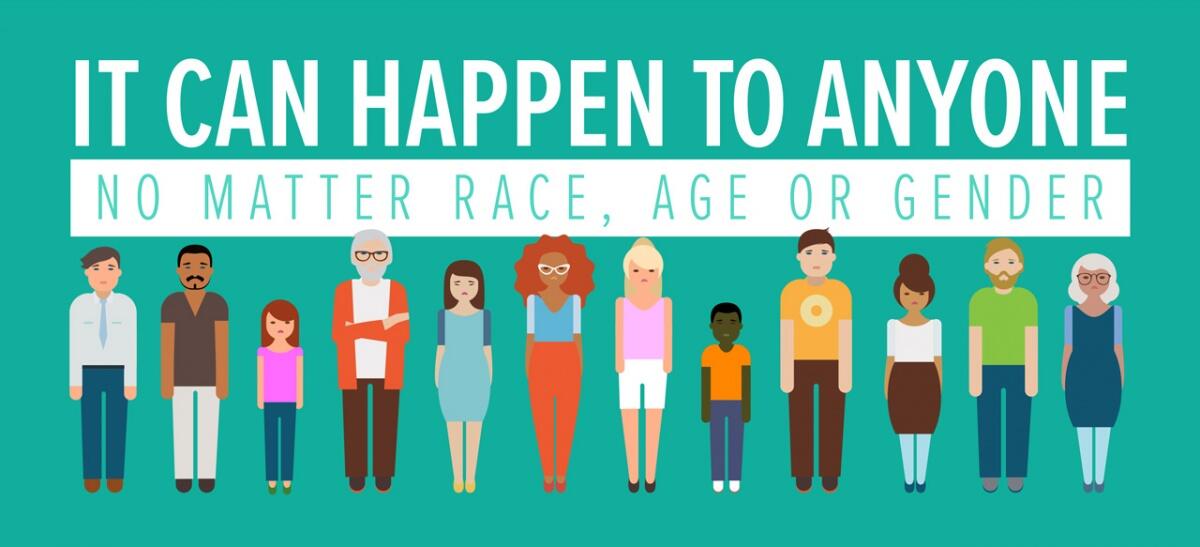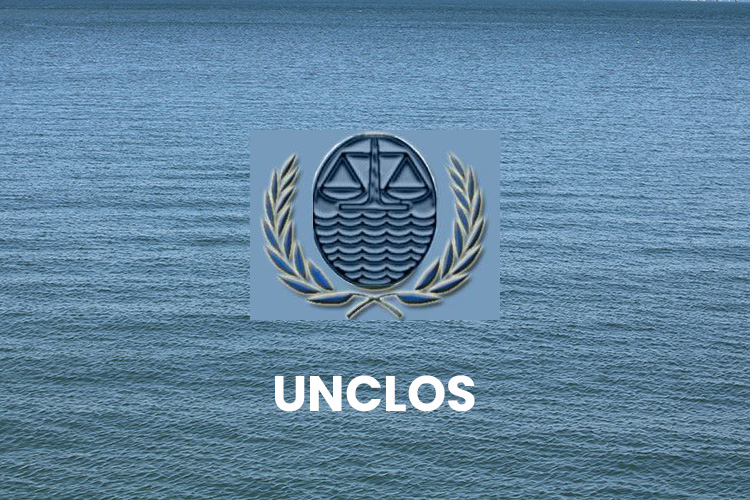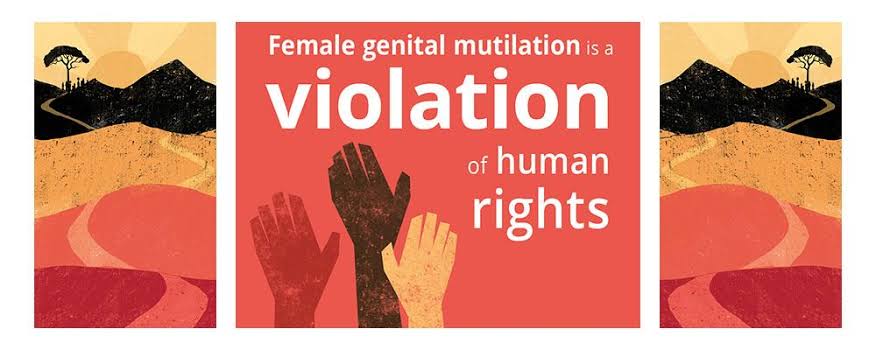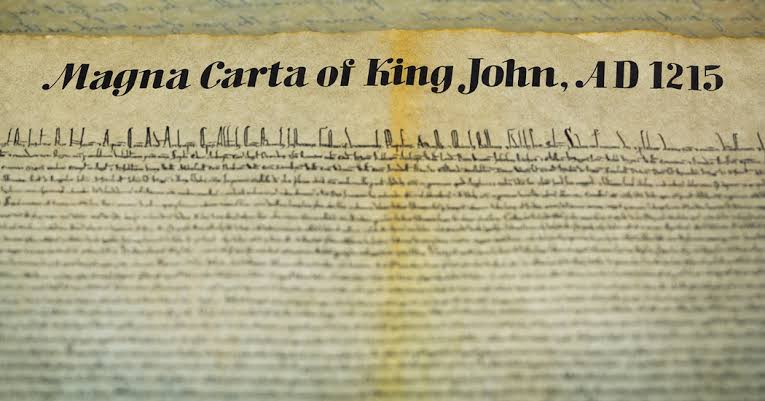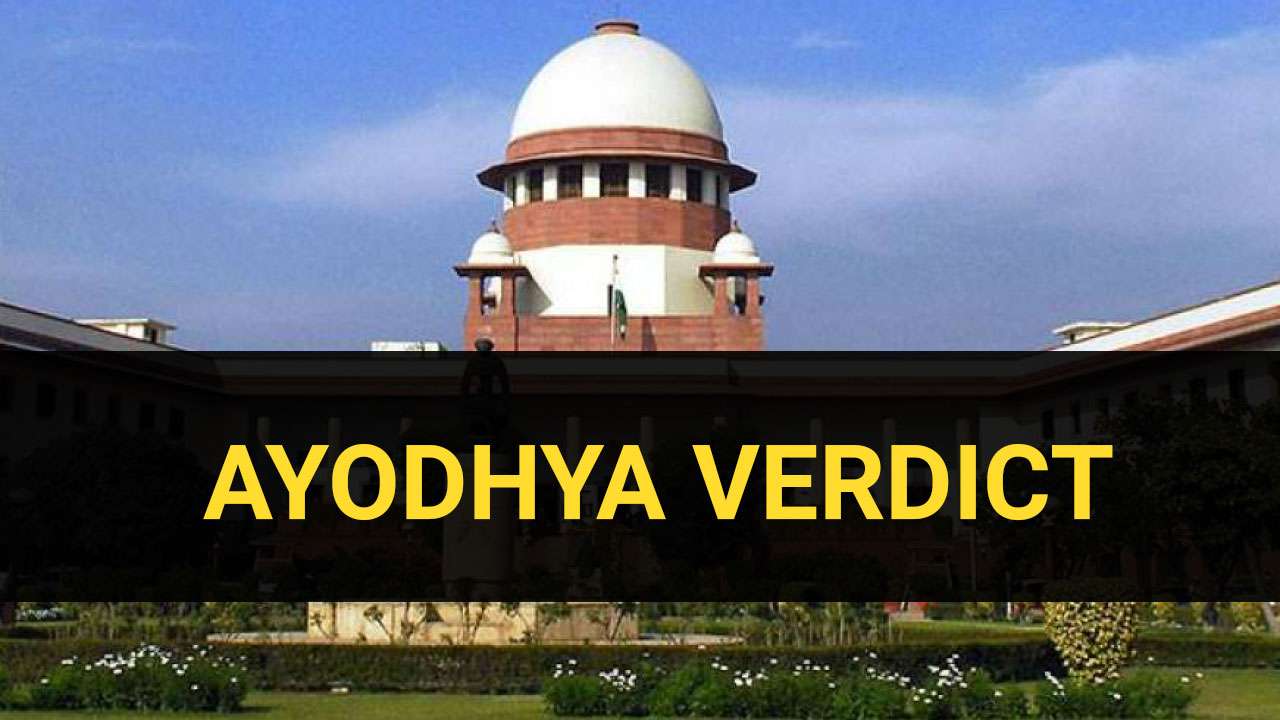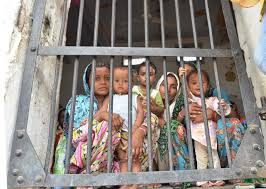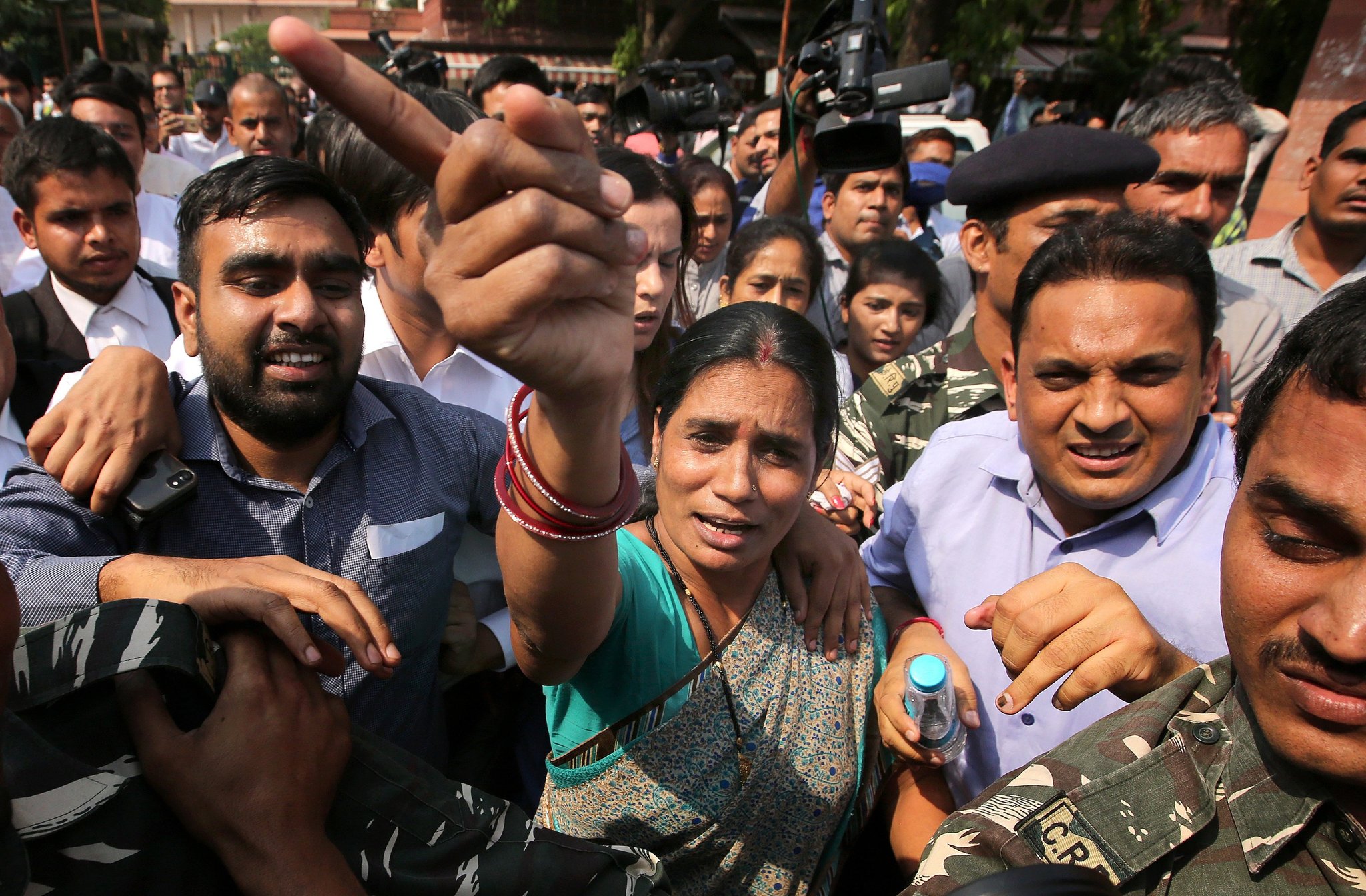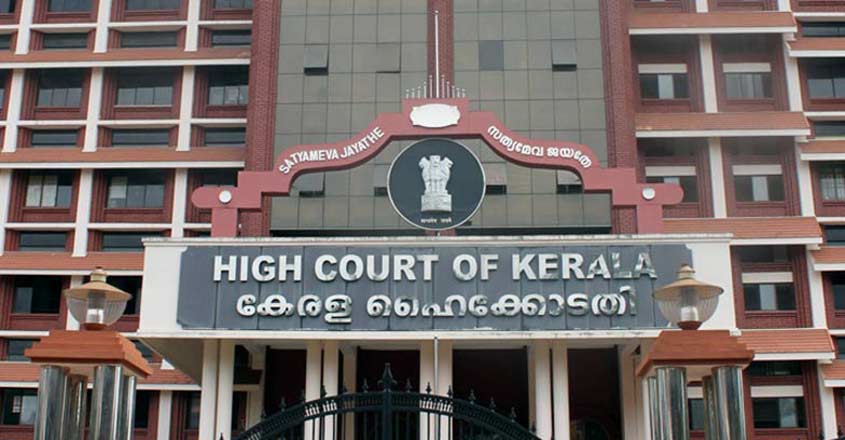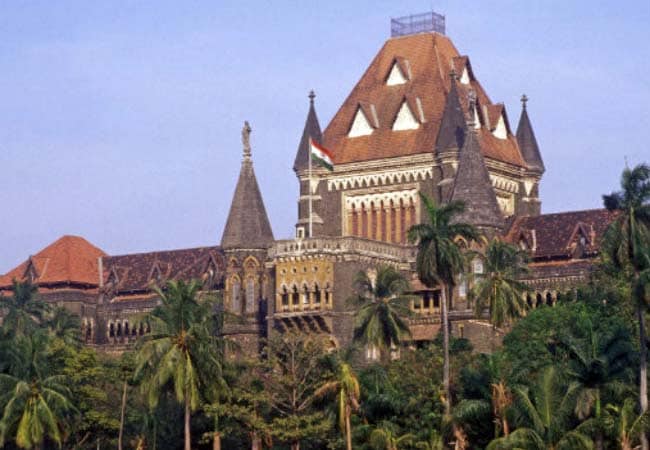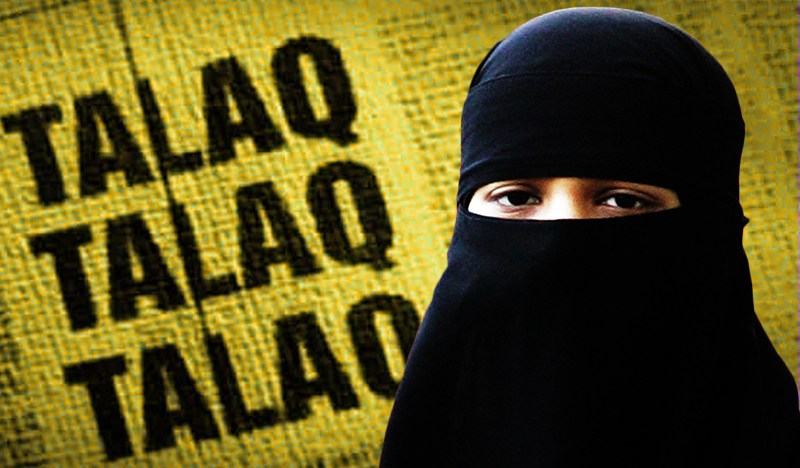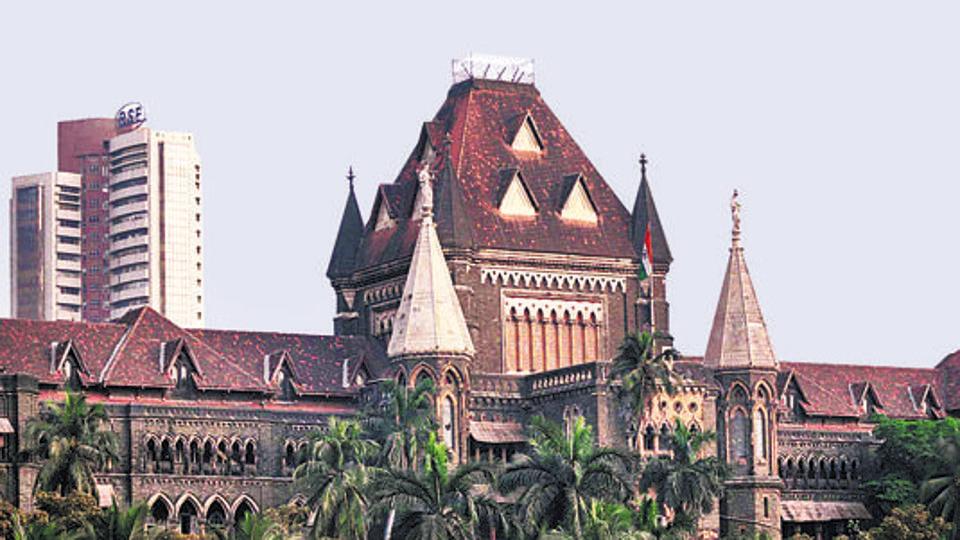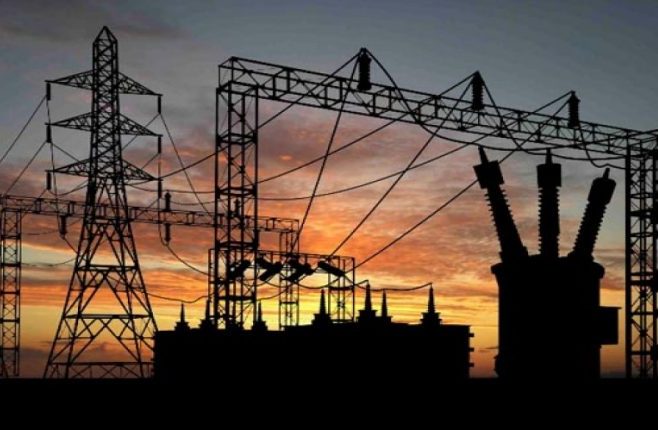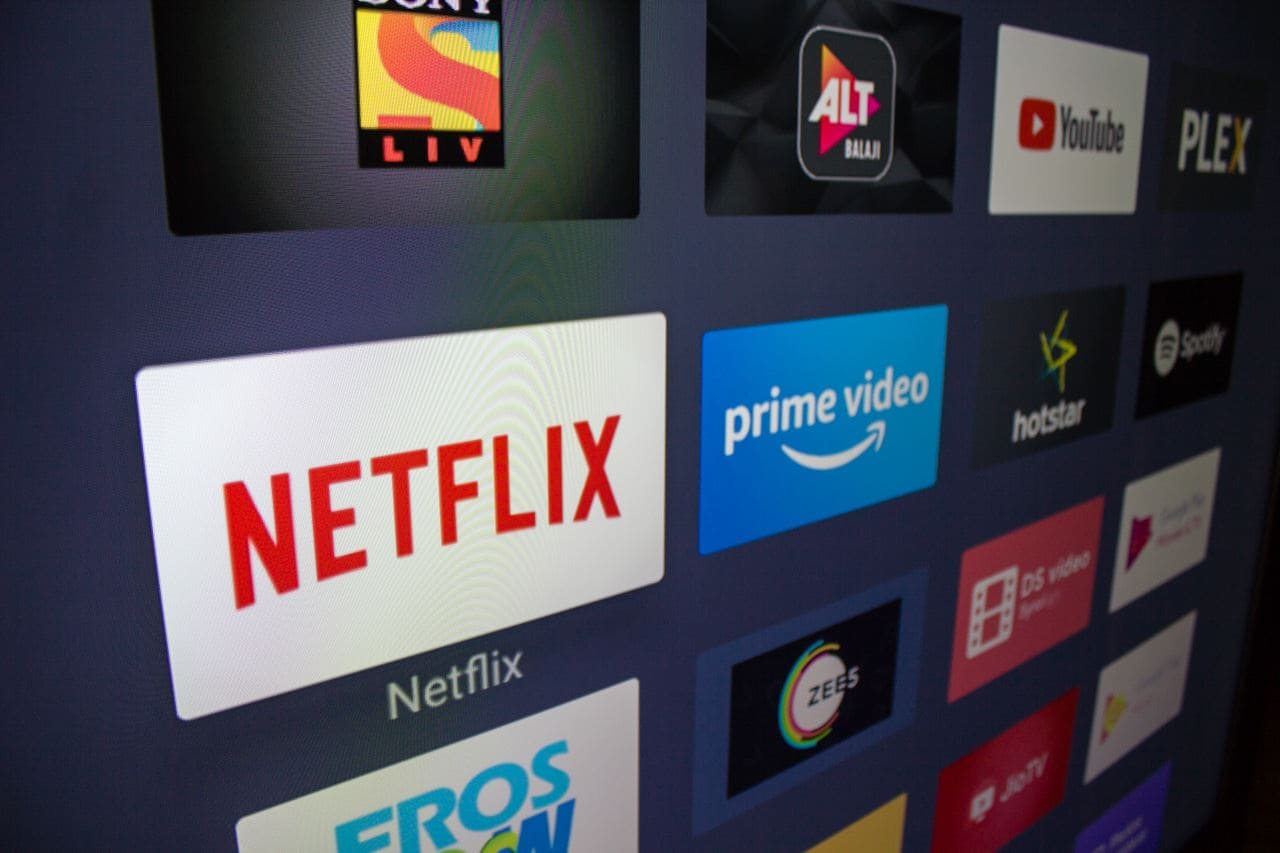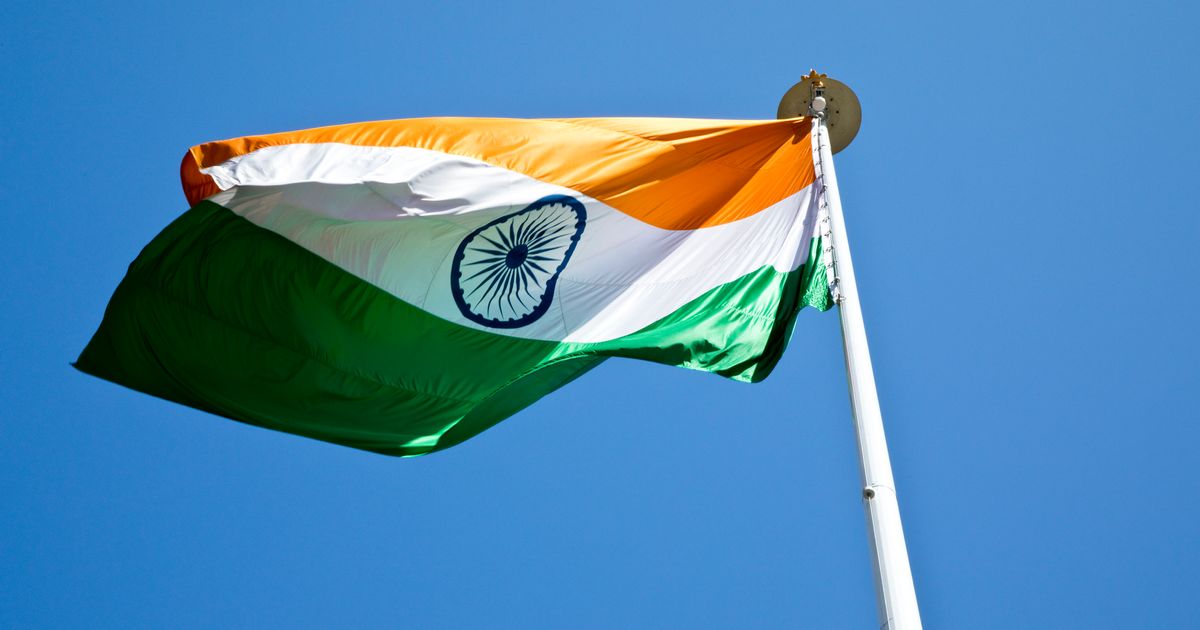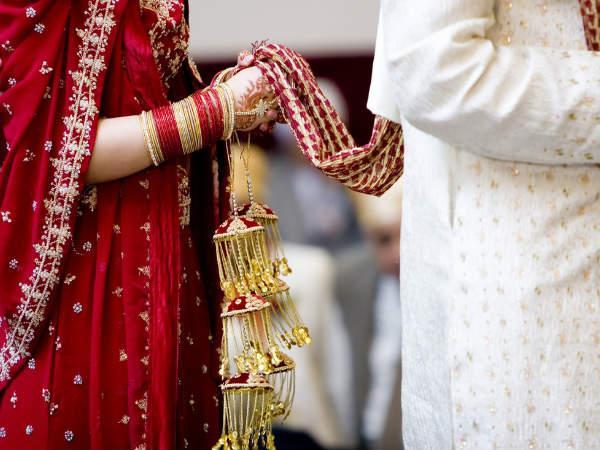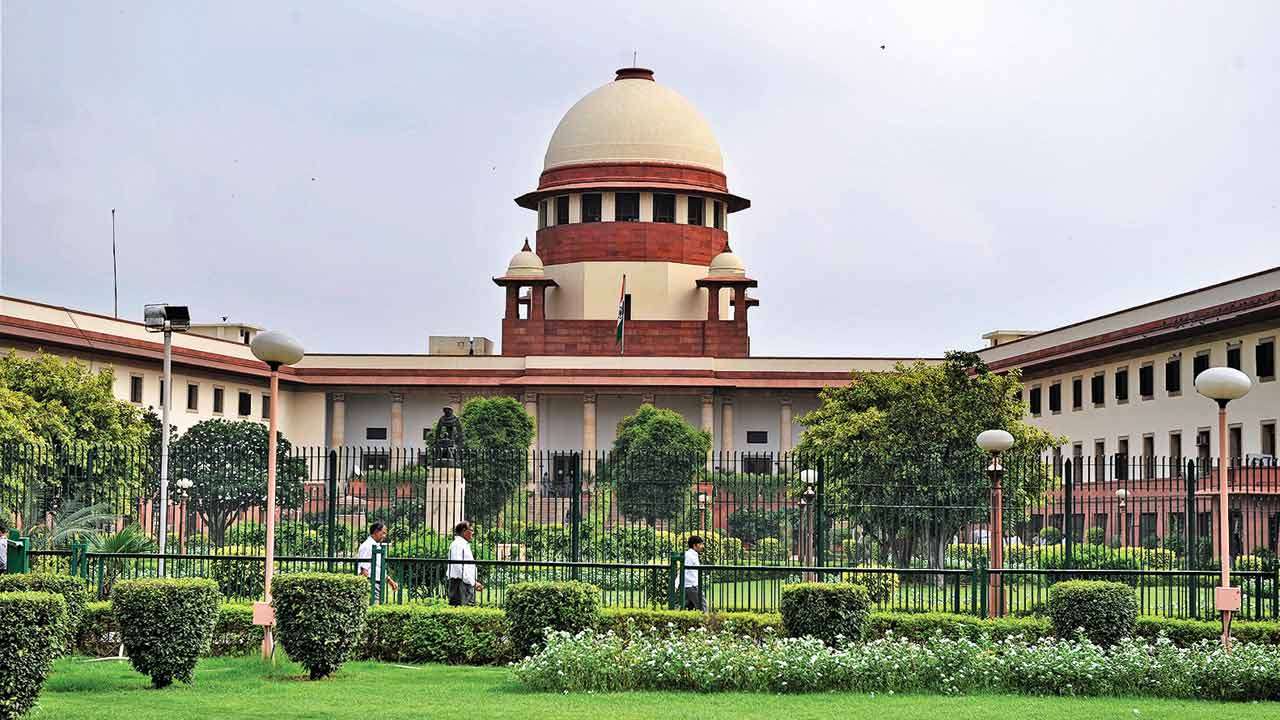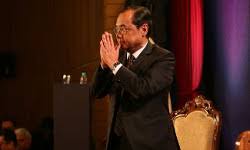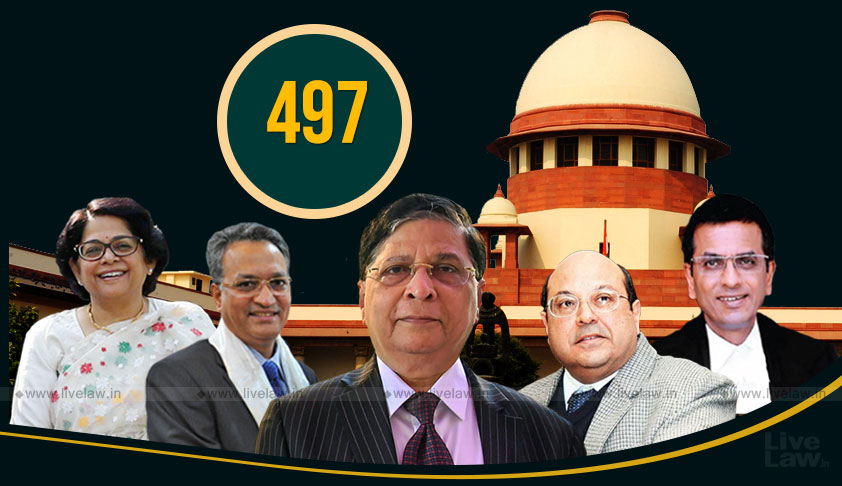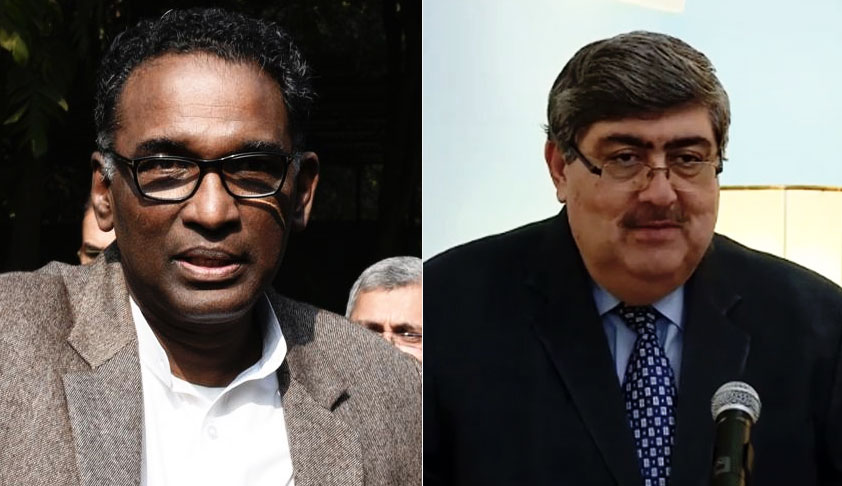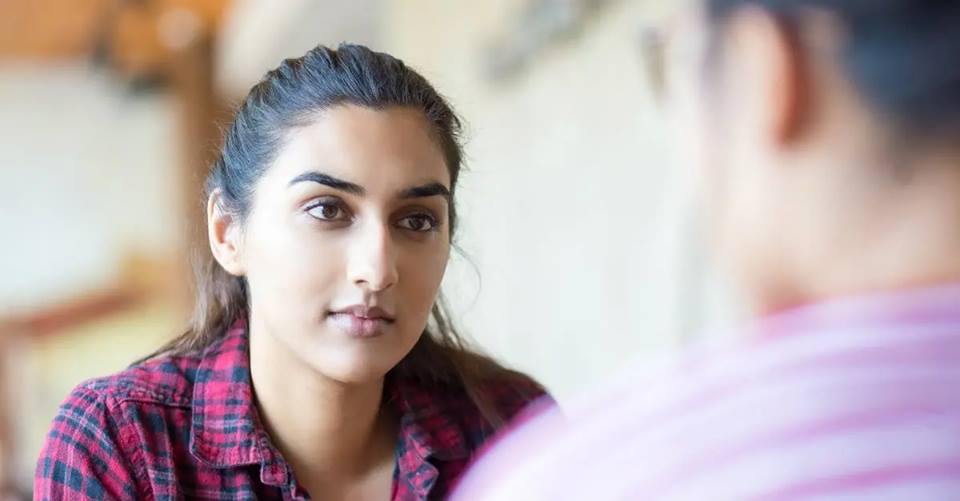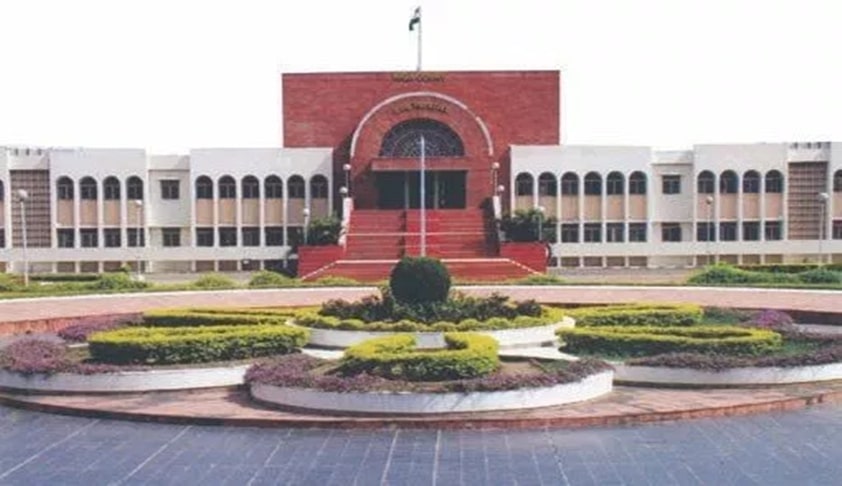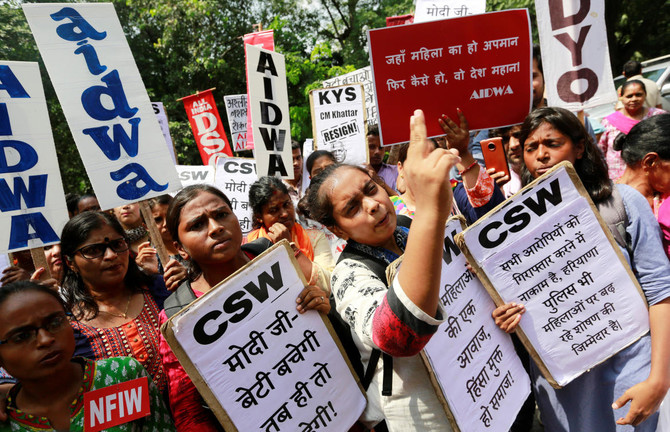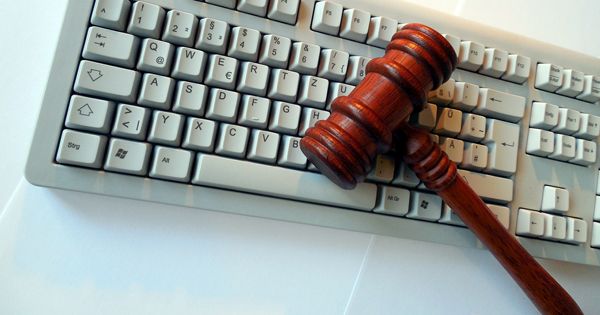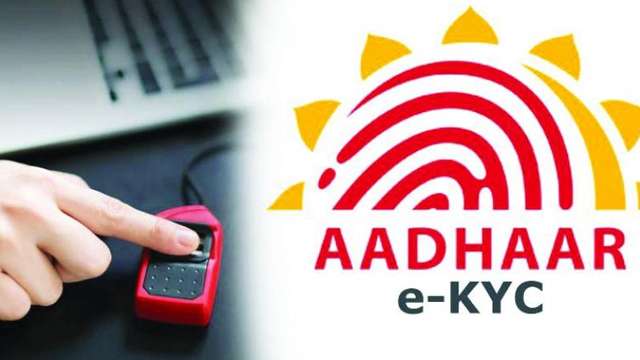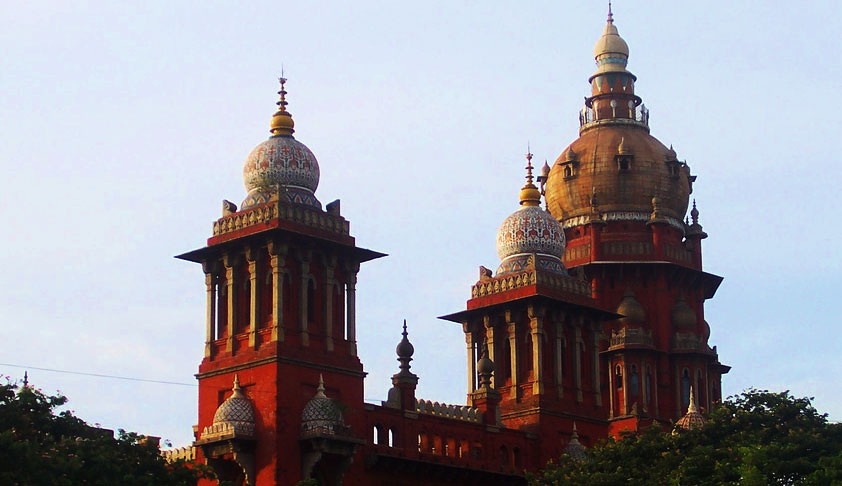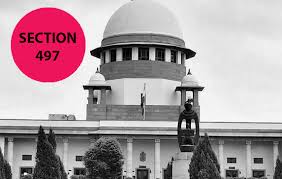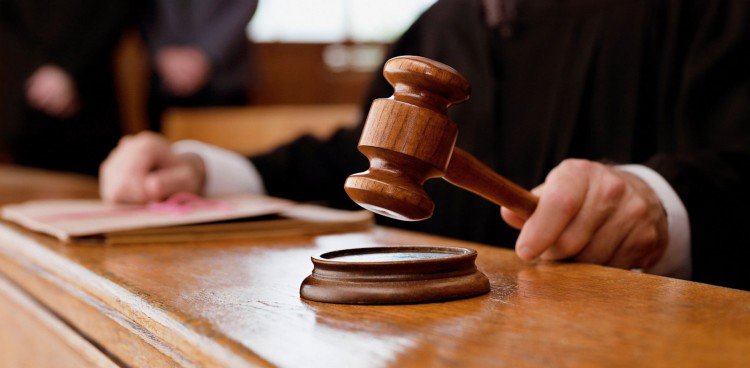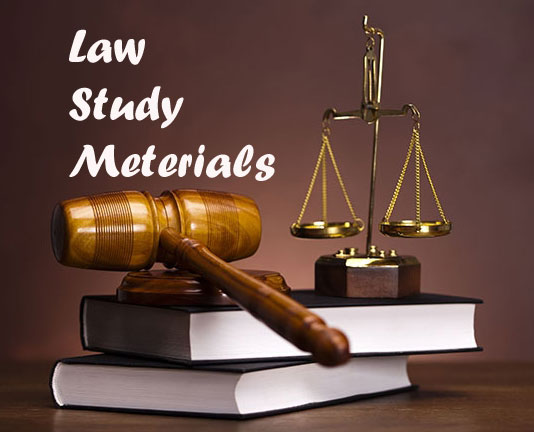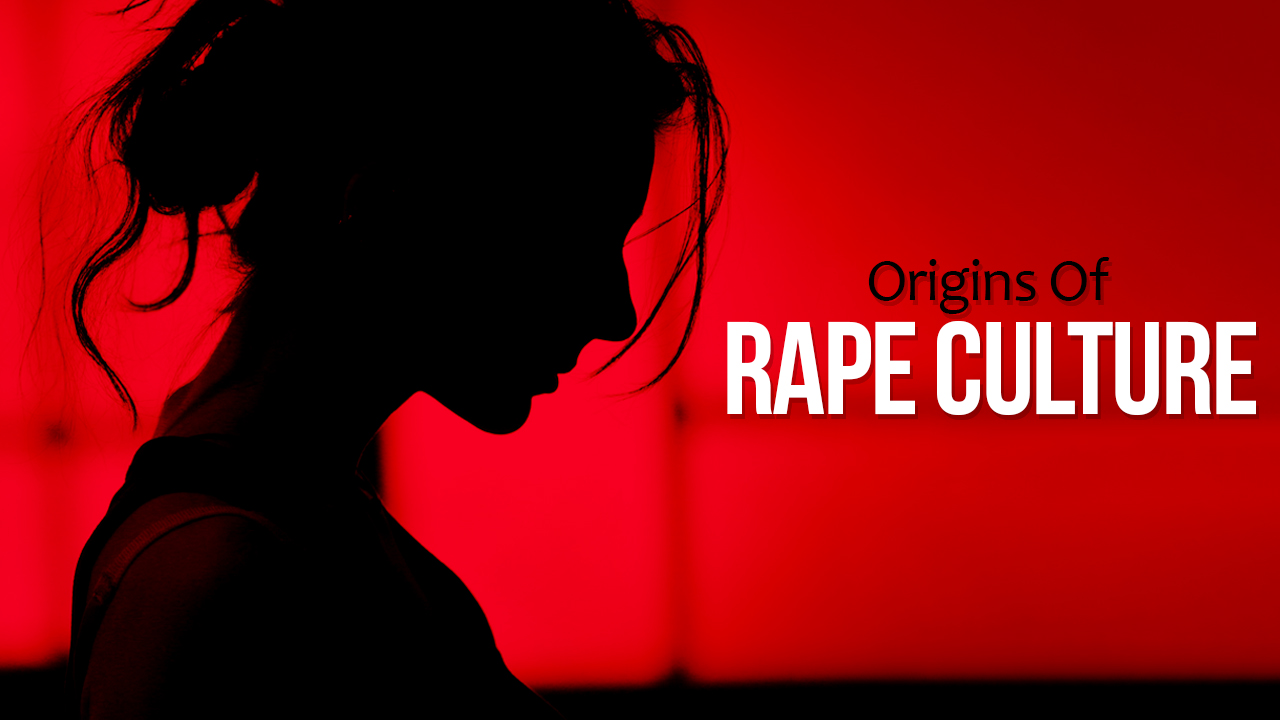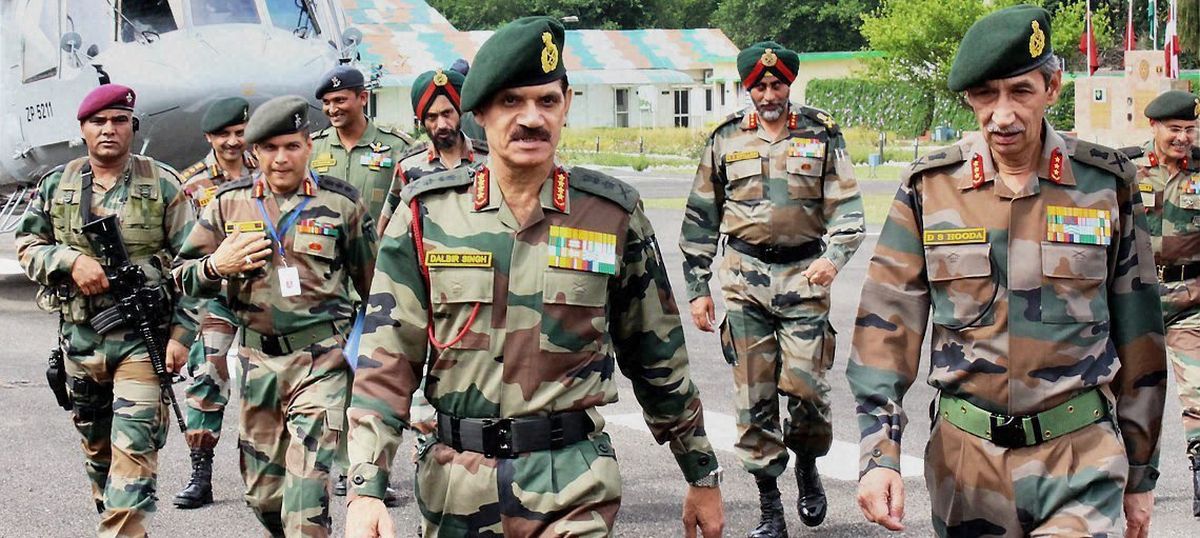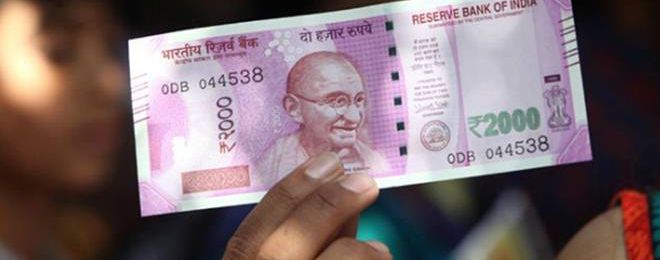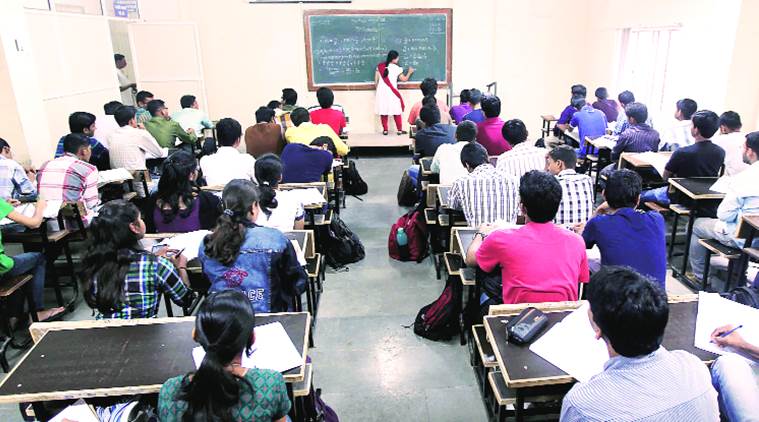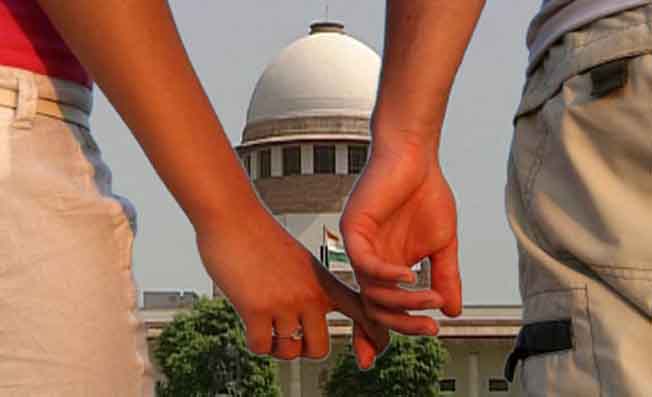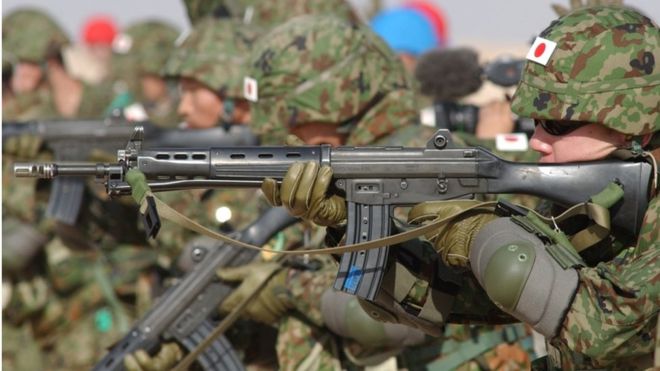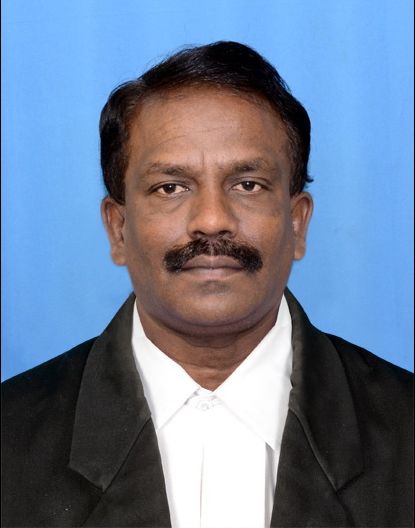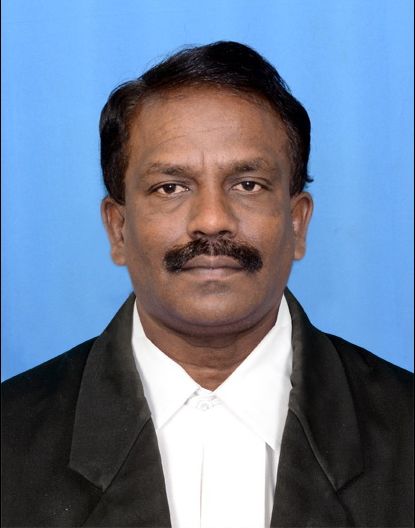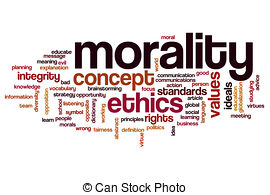Latest Articles
SC Allows Live-Streaming Of Public Proceedings In Larger Public Interest

It must be said with consummate ease that in one of the most landmark, laudable and progressive judgment by the then CJI Dipak Misra, Justice AM Khanwilkar and Dr Dhananjaya Y Chandrachud which will go forward to a large extent in promoting transparency and probity in judicial proceedings, the Supreme Court in Swapnil Tripathi v Supreme Court of India in Writ Petition (Civil) No. 1232 of 2017 along with Writ Petition (Civil) No. 66 of 2018 and Writ Petition (Civil) No. 861 of 2018 and Writ Petition (Civil) No. 892 of 2018 delivered on September 26, 2018 has clearly and convincingly held that the Court proceedings shall be live-streamed in the larger public interest. The Bench has said categorically that appropriate Rules in that regard will be framed soon under Article 145 of the Constitution of India. It held in no uncertain terms that, “Sunlight is the best disinfectant” while also observing that live streaming of court proceedings will effectuate the “public right to know” and bring in more transparency in judicial proceedings.
It may be recalled that it was on July 9 that the novel idea of live streaming of court proceedings in all matters, except in rape cases and matrimonial disputes had found favour with the Bench as well as the Attorney General of India – KK Venugopal while considering the historic petition filed by eminent and senior Supreme Court lawyer Indira Jaising as well as law student Swapnil Tripathi who had challenged the bar imposed on interns entering courtrooms on miscellaneous days. Indira Jaising while stoutly advocating live-streaming had highlighted the need to include safeguards to prohibit unauthorised reproduction of broadcasts. She rightly urged that, “The proceedings will be aired live and hence, it may be open for people to make clippings and create their own copies. Your Lordships must prohibit such production of clips, no matter how big or small, without the authorisation of the court.” She had also urged that there may not be any commercial exploitation of the exercise of broadcasting.
It may be also recalled that on August 3, the then CJI Dipak Misra had asked the petitioner intern Swapnil Tripathi to submit guidelines to the Attorney General KK Venugopal regarding creation of a live streaming room in the Apex Court premises exclusively for law interns and law students. Venugopal had himself suggested that the live telecast of the Apex Court proceedings should be done in only constitutional matters on an experimental basis. He had also submitted that, “My recommendation is that (the live streaming of hearings) may be initially restricted to only cases involving constitutional issues, which the Chief Justice decides, and no other matters, to see the reactions and the responses. Then a decision may be taken one way or the other.”
To start with, Justice AM Khanwilkar who authored the judgment for himself and the then CJI Dipak Misra begins in para 1 of the judgment by noting that, “The petitioners and interventionists, claiming to be public spirited persons, have sought a declaration that Supreme Court case proceedings of “constitutional importance having an impact on the public at large or a large number of people” should be live streamed in a manner that is easily accessible for public viewing. Further direction is sought to frame guidelines to enable the determination of exceptional cases that qualify for life streaming and to place those guidelines before the Full Court of this Court. To buttress these prayers, reliance has been placed on the dictum of a nine-Judge Bench of this Court in Naresh Shridhar Mirajkar and Ors. Vs. State of Maharashtra and Ors., (1966) 3 SCR 744 which has had an occasion to inter alia consider the arguments of journalists that they had a fundamental right to carry on their occupation under Article 19(1)(g) of the Constitution; that they also had a right to attend the proceedings in court under Article 19(1)(d); and that their right to freedom of speech and expression guaranteed under Article 19(1)(a) included their right to publish a faithful report of the proceedings which they had witnessed and heard in Court as journalists. The Court whilst considering the said argument went on to emphasise about the efficacy of open trials for upholding the legitimacy and effectiveness of the Courts and for enhancement of public confidence and support. It would be apposite to reproduce the relevant extract from the said decision propounding about the efficacy of hearing of cases in open courts, in the following words:
“20……. It is well-settled that in general, all cases brought before the Courts, whether civil, criminal, or others, must be heard in open Court. Public trial in open court is undoubtedly essential for the healthy, objective and fair administration of justice. Trial held subject to the public scrutiny and gaze naturally acts as a check against judicial caprice or vagaries, and serves as a powerful instrument for creating confidence of the public in the fairness, objectivity, and impartiality of the administration of justice. Public confidence in the administration of justice is of such great significance that there can be no two opinions on the broad proposition that in discharging their functions as judicial Tribunals, courts must generally hear causes in open and must permit the public admission to the court room. As Bentham has observed: “In the darkness of secrecy sinister interest, and evil in every shape, have full swing. Only in proportion as publicity has place can any of the checks applicable to judicial injustice operate. Where there is no publicity there is no justice. Publicity is the very soul of justice. It is the spur to exertion, and surest of all guards against improbity. It keeps the Judge himself while trying under trial (in the sense that) the security of securities is publicity’. (Scott v. Scott [(1911) All. E.R. 1,30])”
Going forward, it is then noted in para 2 that, “Indeed, the right of access to justice flowing from Article 21 of the Constitution or be it the concept of justice at the doorstep, would be meaningful only if the public gets access to the proceedings as it would unfold before the Courts and in particular, opportunity to witness live proceedings in respect of matters having an impact on the public at large or on section of people. This would educate them about the issues which come up for consideration before the Court on real time basis.”
Now coming to para 6, it stipulates that, “Indisputably, open trials and access to the public during hearing of cases before the Court is an accepted proposition. As regards the pronouncement of judgments by the Supreme Court, there is an express stipulation in Article 145(4) of the Constitution that such pronouncements shall be made in open Court. Indeed, no such express provision is found in the Constitution regarding “”open Court hearing” before the Supreme Court, but that can be traced to provisions such as Section 327 of the Code of Criminal Procedure, 1973 (CrPC) and Section 153-B of the Code of Civil Procedure, 1908 (CPC).”
While spelling out the advantages of live streaming of court proceedings, it is rightly pointed out in para 8 that, “Indubitably, live streaming of Court proceedings has the potential of throwing up an option to the public to witness live court proceedings which they otherwise could not have due to logistical issues and infrastructural restrictions of Courts; and would also provide them with a more direct sense of what has transpired. Thus, technological solutions can be a tool to facilitate actualization of the right of access to justice bestowed on all and the litigants in particular, to provide them virtual entry in the Court precincts and more particularly in Court rooms. In the process, a large segment of persons, be it entrants in the legal profession, journalists, civil society activists, academicians or students of law will be able to view live proceedings in propria persona on real time basis. There is unanimity between all the protagonists that live streaming of Supreme Court proceedings at least in respect of cases of Constitutional and national importance, having an impact on the public at large or on a large number of people in India, may be a good beginning, as is suggested across the Bar.”
Not stopping here, it is then pointed out in para 9 that, “Live streaming of Court proceedings is feasible due to the advent of technology and, in fact, has been adopted in other jurisdictions across the world. Live streaming of Court proceedings, in one sense, with the use of technology is to “virtually” expand the Court room area beyond the physical four walls of the Court rooms. Technology is evolving with increasing swiftness whereas the law and the courts are evolving at a much more measured pace. This Court cannot be oblivious to the reality that technology has the potential to usher in tangible and intangible benefits which can consummate the aspirations of the stakeholders and litigants in particular. It can epitomize transparency, good governance and accountability, and more importantly, open the vista of the court rooms, transcending the four walls of the rooms to accommodate a large number of viewers to witness the live Court proceedings. Introducing and integrating such technology into the courtrooms would give the viewing public a virtual presence in the courtroom and also educate them about the working of the court.”
Needless to say, after dwelling in detail on the prevailing system of live streaming of court proceedings in other countries in subsequent paras and after mentioning the suggestions listed in this regard by the Attorney General of India in para 11, it is then pointed out in para 12 that, “As aforesaid, Courts in India are ordinarily open to all members of public, who are interested in witnessing the court proceedings. However, due to logistical issues and infrastructural restrictions in courts, they may be denied the opportunity to witness live proceedings in propria persona. To consummate their aspirations, use of technology to relay or publicize the live court proceedings can be a way forward. By providing “virtual” access of live court proceedings to one and all, it will effectuate the right of access to justice or right to open justice and public trial, right to know the developments of law and including the right of justice at the doorstep of the litigants. Open justice, after all, can be more than just a physical access to the courtroom rather, it is doable even “virtually” in the form of livestreaming of court proceedings and have the same effect.”
Delving deeper on this subject, it is then pointed out in para 13 that, “Publication of court proceedings of the Supreme Court is a facet of the status of this Court as a Court of Record by virtue of Article 129 of the Constitution, whose acts and proceedings are enrolled for perpetual memory and testimony. Further, live streaming of court proceedings in the prescribed digital format would be an affirmation of the constitutional rights bestowed upon the public and the litigants in particular. While doing so, regard must be had to the fact that just as the dignity and majesty of the Court is inviolable, the issues regarding privacy rights of the litigants or witnesses whose cases are set down for hearing, as also other eceptional category of cases of which live streaming of proceedings may not be desirable as it may affect the cause of administration of justice itself, are matters which need to be identified and a proper regulatory framework must be provided in that regard by formulating rules in exercise of the power under Article 145 of the Constitution. It must be kept in mind that in case of conflict between competing Constitutional rights, a sincere effort must be made to harmonise such conflict in order to give maximum expression to each right while minimizing the encroachment on the other rights. We are conscious of the fact that in terms of Section 327 of CrPC and Section 153-B of CPC, only court-directed matters can be heard in camera and the general public can be denied access to or to remain in the court building used by the Court. Until such direction is issued by the Court, the hearing of the case is deemed to be an open court to which the public generally may have access. The access to the hearing by the general public, however, would be limited to the size and capacity of the courtroom. By virtue of live streaming of court proceedings, it would go public beyond the four walls of the court room to which, in a given case, the party or a witness to the proceedings may have genuine reservations and may claim right of privacy and dignity. Such a claim will have to be examined by the concerned Court and for which reason, a just regulatory framework must be provided for, including obtaining prior consent of the parties to the proceedings to be live streamed.”
As it turned out, while agreeing with the recommendations and suggestions given by the Attorney General of India, it is then observed in para 14 that, “We generally agree with the comprehensive guidelines for live streaming of Court proceedings in the Supreme Court suggested by the learned Attorney General for India Shri K.K. Venugopal. The project of live streaming of the court proceedings of the Supreme Court on the “internet” and/or on radio and TV through live audio-visual broadcasting/telecasting universally by an official agency, such as Doordarshan, having exclusive telecasting rights and/or official website/mobile applicant of the Court, must be implemented in a progressive, structured and phased manner, with certain safeguards to ensure that the purpose of live streaming of proceedings is achieved holistically and that it does not interfere with the administration of justice or the dignity and majesty of the Court hearing the matter and/or impinge upon any rights of the litigants or witnesses. The entire project will have to be executed in phases, with certain phases containing sub-phases or stages. Needless to observe that before the commencement of first phase of the project, formal rules will have to be framed by this Court to incorporate the recommendations made by the learned Attorney General for India as noted in paragraph 11 above, while keeping in mind the basic issues, such as:-
(i) To begin with, only a specified category of cases or cases of constitutional and national importance being argued for final hearing before the Constitution Bench be live streamed as a pilot project. For that, permission of the concerned Court will have to be sought in writing, in advance, in conformity with the prescribed procedure.
(ii) Prior consent of all the parties to the concerned proceedings must be insisted upon and if there is no unanimity between them, the concened Court can take the appropriate decision in the matter for live streaming of the court proceedings of that case, after having due regard to the relevancy of the objections raised by the concerned party. The discretion exercised by the Court shall be treated as final. It must be non-justiciable and non-appealable.
(iii) The concerned court would retain its power to revoke the permission at any stage of the proceedings suo motu or on an application filed by any party to the proceeding or otherwise, in that regard, if the situation so warrants, keeping in mind that the cause of administration of justice should not suffer in any manner.
(iv) The discretion of the Court to grant or refuse to grant such permission will be, inter alia, guided by the following considerations:
(a) unanimous consent of the parties involved,
(b) even after the parties give unanimous consent the Court will consider the sensitivity of the subjectmatter before granting such permission, but not limited to case which may arouse passion or social unrest amongst sections of the public,
(c) any other reason considered necessary or appropriate in the larger interest of administration of justice, including as to whether such broadcast will affect the dignity of the court itself or interfere with/prejudice the rights of the parties to a fair trial,
(v) There must be a reasonable time-delay (say ten minutes) between the live court proceedings and the broadcast, in order to ensure that any information which ought not to be shown, as directed by the Court, can be edited from the broadcast.
What cannot be also missed out here is exactly what para 15 postulates. It states that, “Until a full-fledged module and mechanism for live streaming of the court proceedings of the Supreme Court over the “internet” is evolved, it would be open to explore the possibility of implementation of Phase-I of live streaming in designated areas within the confines of this Court via “intranet” by use of allocated passwords as a pilot project. The designated areas may include:
(a) dedicated media room which coulld be accessible to the litigants, advocates, clerks and interns. Special provisions must be made to accommodate differently abled people;
(b) the Supreme Court Bar Association room/lounge;
(c) the Supreme Court Advocates-on-Record Association room/lounge;
(d) the official chambers of the Attorney General, Solicitor General and Additional Solicitor Generals in the Supreme Court premises;
(e) Advocates’ Chambers blocks;
(f) Press Reporters room.”
More importantly, it is then mentioned in para 16 that, “It may be desirable to keep in mind other emasures to be taken for efficient management of the entire project such as:
(i) Appoint a technical committee comprising the Registrar (IT), video recording expert(s) and any other members as may be required, to develop technical guidelines for video recording and broadcasting court proceedings, including the specific procedure to be followed and the equipment to be used in that regard.
(ii) Specialist video operator(s) be appointed to handle the live broadcast, who will work under the directions of the concerned Court. The coverage itself will be coordinated and supervised by a Court-appointed officer.
(iii) The focus of the cameras in the court room will be directed only towards two sets of people:
a. The Justices/Bench hearing the matter and at such an angle so as to only show the anterior-facing side of the Justices, without revealing anything from behind the elevated platform/level on which the Justices sit or any of the Justices’ papers, notes, reference material and/or books;
b. The arguing advocate(s) in the matter and at such an angle so as to only show the anterior-facing side of the Justices, without revealing anything from behind the elevated platform/level on which the Justices sit or any of the Justices’ papers, notes, reference material and/or books;
c. There shall be no broadcast of any interaction between the advocate and the client even during arguments.
(iv) Subject to any alteration of camera angles for the purpose of avoiding broadcast of any of the aforestated papers, notes, reference materials, books and/or discussions, the camera angles will remian fixed over the course of the broadcast.
(v) This Court shall introduce a case management system to ensure inter alia that advocates are allotted and adhere to a fixed time limit while arguing their matter to be live streamed.
(vi) This Court must retain copyright over the braodcasted material and have the final say in respect of use of the coverage material.
(vii) Reproduction, re-broadcasting, transmission, publication, re-publication, copying, storage and/or modification of any part(s) of the original broadcast of Court proceedings, in any form, physical, digital or otherwise, must be prohibited. Any person engaging in such act(s) can be proceeded under, but not limited to, the Indian Copyright Act, 1957, the Indian Penal Code, 1860, the Information Technology Act, 2000 and the Contempt of Courts Act, 1971.”
It is then clarified in para 17 that, “We reiterate that the Supreme Court Rules, 2013 will have to be suitably amended to provide for the regulatory framework as per the contours delineated hereinabove. We may hasten to add that it would be open to frame such regulatory measures as may be found necessary for holistic live streaming of the court proceedings, without impinging upon the cause of administration of justice in any manner.”
Finally, it is now time to dwell on the concluing paras 18, 19 and 20. Para 18 states that, “In conclusion, we hold that the cause brought before this Court by the protagnoists in larger public interest, deserves acceptance so as to uphold the constitutional rights of public and the litigants, in particular. In recognizing that court proceedings ought to be live streamed, this Court is mindful of and has strived to balance the various interests regarding administration of justice, including open justice, dignity and privacy of the participants to the proceedings and the majesty and decorum of the Courts.” Para 19 envisages that, “As a result, we allow these writ petitions and interventionists’ applications with the aforementioned observations and hope that the relevant rules will be formulated expeditiously and the first phase project executed in right earnest by all concerned. Ordered accordingly.” Para 20 then observes that, “While parting, we must place record our sincere appreciation for the able assistance and constructive suggestions given by the learned counsel and the parties-in-person appearing in the case.”
For the sake of brevity, it is now time to briefly dwell on the important points of the separate judgment delivered by Justice Dr DY Chandrachud. Para 27 states that, “Public confidence in the judiciary and in the process of judicial decision making is crucial for preserving the rule of law and to maintain the stability of the social fabric. Peoples’ access to the court signifies that the public is willing to have disputes resolved in court and to obey and accept judicial orders. Open courts effectively foster public confidence by allowing litigants and members of the public to view courtroom proceedings and ensure that the judges apply the law in a fair and impartial manner.”
While stressing on the inevitable importance of technology, it is then pointed out in para 34 that, “In the present age of technology, it is no longer sufficient to rely solely on the media to dleiver information about the hearings of cases and their outcomes. Technology has become an inevitable facet of all aspects of life. Internet penetration and increase in the use of smart phones has revolutionised how we communicate. As on 31 March 2018, India had a total of 1,206.22 million telecom subscribers and 493.96 million internet users. Technology can enhance public access, ensure transparency and pave the way for active citizen involvement in the functioning of state institutions. Courts must also take the aid of technology to enhance the principle of open courts by moving beyond physical accessibility to virtual accessibility.”
Truly speaking, Justice Dr DY Chandrchud then in para 38 illustrated the multiple reasons why live streaming will be beneficial to the judical proceedings. It states that, “There are multiple reasons why live-streaming will be beneficial to the judicial system:
a. The technology of live-streaming injects radical immediacy into courtroom proceedings. Each hearing is made public within seconds of its occurrence. It enables viewers to have virtual access to courtroom proceedings as they unfold;
b. Introduction of live-streaming will effectuate the public’s right to know about court proceedings. It will enable those affected by the decisions of the Court to observe the manner in which judicial decisions are made. It will help bring the work of the judiciary to the lives of citizens.
c. Live-streaming of courtroom proceedings will reduce the public’s reliance on second-hand narratives to obtain information about important judgments of the Court and the course of judicial hearings. Society will be able to view court proceedings first hand and form reasoned and educated opinions about the functioning of courts. This will help reduce misinformation and misunderstanding about the judicial process;
d. Viewing court proceedings will also serve an educational purpose. Law students will be able to observe and learn from the interactions between the Bar and the Bench. The archives will constitute a rich source for aspiring advocates and academicians to study legal advocacy procedures, interpretation of the law, and oratory skills, among other things. It will further promote research into the institutional functioning of the courts. Live-streaming and broadcasting will also increase the reach of the courts as it can penetrate to even part of the country;
e. Live-streaming will enhance the rule of law and promote better understanding of legal governance as part of the functioning of democracy;
f. Live-streaming will remove physical barriers to viewing court proceedings by enabling the public to view proceedings from outside courtroom premises. This will also reduce the congestion which is currently plaguing the courtrooms. It will reduce the need for litigants to travel to the courts to observe the proceedings of their cases;
g. Live-streaming is a significant instrument of enhancing the accountability of judicial institutions and of all those who participate in the judicial process. Delay in the dispensation of justice is a matter of serious concern. Live-streaming of court proceedings will enable members of the public to know of the causes of adjournments and the reasons why hearings are delayed; and
h. Above all, sunlight is the best disinfectant. Live-streaming as an extension of the principle of open courts will ensure that the interface between a court hearing with virtual reality will result in the dissemination of information in the widest possible sense, imparting transparency and accountability to the judicial process.
Major common law jurisdictions across the globe have already embraced the concept of live-streaming and broadcasting courtroom proceedings. It may be useful to look at the evolution of the concept in a few jurisdictions, and the practices followed by them.”
To start with, para 39 sets the ball rolling by pointing out that, “This section takes a measured look at the development of the principle of open justice in common law and other jurisdictions. It examines how courts in other countries have addressed concerns of privacy, confidentiality and sensitivity of litigants, witnesses and cases.”
(i) United Kingdom
The Supreme Court of UK permits broadcasting of its courtroom proceedings. The Eighth Practice Direction of the Supreme Court permits “video footage of proceedings before the Court to be broadcast where this does not affect the administration of justice. Three national broadcasters – BBC, ITN and Sky News are permitted to film and broadcast the Supreme Court proceedings in accordance with the protocol which has been agreed with. The protocol prohibits recording of certain types of proceedings like private discussions between litigants and their counsel. The footage is only allowed to be used for informational purposes in programs like news, current affairs, education and legal training. However, any broadcasting which may detract from the seriousness or integrity of the proceedings, like entertainment programmes, satirical programmes, political party broadcasts, and advertising or promotion, is not permitted. Further, any still images are always required to be used “in a way that has regard to the dignity of the Court and its functions as a working body.
Sky News airs live broadcasts of the UK Supreme Court’s hearings. By the end of 2011, the UK Supreme Court permitted journalists to use live text-based communications, including social media platform Twitter, during court hearings. The presiding judge, however, retains full discretion to prohibit such communications in the interest of justice. The UK Supreme Court has its own Twitter handle (@UK Supreme Court) which it uses to update the public about its judgments. It also has a YouTube channel where it showcases short summaries of judgments read out by the judges.
In 2013, the UK permitted audio-visual coverage of the Court of Appeals (Civil and Criminal). The broadcast is subject to certain limitations –(a) only the judgments and lawyers arguments are permitted to be filmed. Victims and witnesses are not recorded; and (b) live broadcasts are delivered with a seventy seconds delay.
The court retains control over the live broadcast. A single video-journalist is authorised to record and regulate the live proceedings and is bound by the court’s orders. Only the appointed journalist or his substitute is permitted to take pictures in court. The appointed journalist is jointly employed by the four media groups which are funding the project-Sky News, ITN, BBC and the Press Association news agency. Only the appointed journalist or his substitute is permitted to take pictures in court. Although the appointed journalist has the permission to film any of the fifteen courtrooms in which the Court of Appeals may sit, practically, the media organisations pick only one court at a time for live broadcast.
The Court of Appeals was opened for broadcasting upon the recommendations of the Ministry of Justice, in its 2012 Report.
Live-streaming of the Court of Appeals hearings opened the doors to other courts in the UK for broadcasting. The UK Parliament enacted the Crime and Courts Act, 2013, which, inter alia, enables recording of court proceedings with the approval of the Lord Chancellor and the Lord Chief Justice. This was enacted as a primary legislation to empower the Lord Chancellor, with the Lord Chief Justice, “to set out in secondary legislation the specific circumstances in which the prohibition on cameras in courts…will be disapplied.”
In 2016, the Ministry of Justice launched a three-month pilot program to experiment with broadcasting the proceedingss of eight England and Welsh Crown Courts. This was limited to judges sentencing remarks and the footage was not made available to the public. The question of broadcasting the Crown Court’s hearings is currently pending consideration before the Ministry of Justice, as it involves larger issues of safeguarding witnesses and victims.
(ii) South Africa
In South Africa, the presence of cameras in the courtroom is a recent development and is at a relatively nascent stage. In 2017, the Supreme Court of appeal in South Africa (which is the higehst court of appeal in South Africa) set a precedent permitting broadcasting of proceedings in all courts of South Africa. (The NDPP v Media 24 Limited & others and HC Van Breda v Media 24 Limited & others (425/2017)[2017] ZASCA 97) Now, the media is permitted to live broadcast the proceedings of all South African courts.
(iii) Canada
The Canadian Supreme Court is considered a pioneer for adapting itself to technology and permitting audio-visual broadcasting of its proceedings. In 1993, the Canadian Supreme Court conducted a successful pilot project, live televising the hearings of three high profile cases. The broadcasts were governed by the following guidelines:
“(a) The case to be filmed will be selected by the Chief Justice.
(b) The Chief Justice or presiding Justice may limit or terminate media coverage to protect the rights of the parties; the dignity of the court; to assure the orderly conduct of the proceedings; or for any other reason considered necessary or appropriate.
(c) No direct public expense is to be incurred for wiring, or personnel needed to provide media coverage.
The Canadian Supreme Court permits the Canadian Parliamentary Press Gallery to live broadcast all appeals before it. The Canadian Parliamentary Affairs Channel (CPAC) is also allowed to televise the appeal hearings of the Court, but at a later date. The broadcasts are subject to guidelines which ensure that the Court retains control over the filming process. Although the CPAC decides which cases to broadcast, the Supreme Court has the discretion to prohibit the filming of specific appeals. The CPAC is permitted to share the broadcast feed with other television networks, for use as snippets in news programs.
At present, four cameras are installed in the Supreme Court. The appeal hearings have been broadcast since 2009 and are archived on the Court’s website. The cameras are installed by the Court and are operated by the Court’s employees. Outside cameras are not permitted except for special events. The copyright over the proceedings is retained by the Court. Before any case can be filmed, the Supreme Court requires parties to consent to the recording and television of the proceedings. Any party seeking to exclude their case from the broadcast must convey the same to the Registrar at least two weeks prior to the hearing date.
(iv) Australia
Australia follows an open court system, with courts in all Australian jurisdictions admitting television cameras into courtrooms. Since 2012, audio-visual recordings of the High Court of Australia have been made available to the public. The entire process of filming and broadcasting is carried out by the Court staff. Transcripts of the hearings are made available within a day or two of most hearings. The High Court has stated that initially the recordings will be avaialble after a few business days, however, the Court will endeavour to reduce the number of days.
Apart from the High Court, most Australian courts do not maintain a consistent policy on admitting television cameras into the courtroom. Filming is permitted on an ad hoc basis and is usually restricted to the recording of file and overlay footage or ceremonial sittings.
(v) New Zealand
New Zealand allows wide access to the media in courts and has one of the most progressive live broadcast policies among common law countries. New Zealand permits media houses to broadcast court proceedings with the approval of the court. The broadcast is governed by a set of guidelines which balance the principle of open justice with the need for a fair trial. They impose upon the media the responsibility to provide “an accurate, fair and balanced report of the hearing” without publishing anything out of context. They also provide for a ten minute delay in broadcasting audio and video recordings. Under the guidelines, any media outlet wishing to film and broadcast court proceedings is required to seek prior written permission from the court for each case. The discretion of the court to grant permission is guided by the following considerations:
“a. the need for a fair trial;
b. the desirability of open justice;
c. the principle that the media have an important role in the reporting of trials as the eyes and ears of the public;
d. court obligations to the victims of offences; and
e. the interets and reasonable concerns and perceptions of the parties, victims and witnesses.
The Supreme Court permits recording of its proceedings in majority of the cases, unless specifically objected to by the parties. The Supreme Court’s media guidelines, published upon its establishment in 2004, indicate that audio-visual covering is to be considered as the norm, rather than the exception:
“Subject to paragraph (5), all applications to televise or otherwise record proceedings of the Supreme Court will be deemed to be approved unless a party indicates, within 3 days of being advised by the registrar of the application, that the party objects to it.”
(vi) United States
The US Supreme Court does not permit video recording or photography of its proceedings. It releases audio transcripts of the oral arguemnts on the same day. Audio recordings of each week’s oral arguments are released on the court’s website at the end of the week.
Each Federal Court of Appeals has the discretion to provide audio or video reocrdings of its proceedings, subject to guidelines framed by the court. Since 2014, the US Court of Appeals for the Ninth Circuit has approved video broadcasting of all cases before it, except those prohibited by law through guidelines. The media needs to take prior approval of the court to record the proceedings. The presiding judge is granted absolute discretion to limit or terminate media covergae, or direct the removal of camera coverage personnel when necessary in order to protect the rights of the parties or aid the conduct of proceedings. The video and audio reocrdings of the federal judiciary are hosted on YouTube and are also available on the court’s official website. The district and lower courts in each state permit some form of audio or video broadcasting and recording of its proceedings, subject to guidelines and rules. (As held by the Supreme Court of the Unioted States in Chandler v Florida, 449 U.S. 560(1981).
(vii) Brazil
In 2002, the President of Brazil sanctioned a law enabling the creation of a public television channel dedicated to the judiciary and to the Supreme Court. The court sessions of the Supreme Court (Supremo Tribunal Federal) are broadcast online on either ‘TV Justica’ or ‘Radio Justica’ and operated by the Supreme Court. Aside from being aired on television and radio, the proceedings can also be streamed online as the Court maintains a Twitter account and YouTube channel. The unique feature of the Brazilian Supreme Court is that cameras are permitted into the conferences where the judges deliberate.
(viii) International Courts
International courts have also embraced the idea of broadcasting their court proceedings. The International Criminal Court (ICC) permits televising of its cases, although with a thirty minute delay. The ICC has a YouTube channel where it broadcasts case proceedings, press conferences, and informative videos in different languages. In the European Court on Human Rights (ECHR), all hearings are permitted to be made public, unless specifically disallowed by the Court. The broadcast is available on the Court’s website on the same day. Broadcast of morning sessions is put up by the afternoon, and the afternoon sessions by evenings. The ECHR states that all hearings are filmed and broadcast of the Court’s website on the day itself, from 14:30 (local time) onwards.
It is rightly underscored by Justice Chandrachud in para 41 that, “Live-streaming of court proceedings is manifestly in public interest. It is important to re-emphasise the significance of live-streaming as an extension of the principle of open justice and open courts. However, the process of live-streaming should be subjected to carefully structured guidelines. Initially, a pilot project may be conducted for about three months, by live-streaming only cases of national and constitutional importance in the Chief Justice’s Court. Progressively, as and when the infrastructure is ready, this Court can expand the ambit of live-streaming to cover all cases (except for the ones which are excluded.)
It is also rightly underscored in para 42 that, “The need for live-streaming of proceedings applies with equal and, in some respects, greater force to proceedings of cases in the district judiciary and the High Courts. The pattern of litigation in our country resembles a pyramid. The courts within the district judiciary represent the larger base of the pyramid where citizens have the greatest interface. It is to the Courts comprised in the district judiciary that citizens turn as a point of first access for remedying injustice. At the tip of the pyramid is the jurisdiction of this Court. In terms of volume, the largest amount of litigation emanates in the district judiciary, followed by the High Courts. The engagements of the district judiciary in resolving injustices faced by citizens requires that every citizen should have full access to and knowledge about the proceedings before those courts. Equally, the principle of an open court which has been espoused in this judgment would merit that proceedings before the High Courts should also be live-streamed.”
It also cannot be lsot sight of what is pointed out in para 43. It states that, “Live-streaming o proceedings is crucial to the dissemination of knowledge about judicial proceedings and ghranting full access to justice to the litigant. Access to justice can never be complete without the litigant being able to see, hear and understand the course of proceedings first hand. Apart from this, live streaming is an important facet of a responsive judiciary which accepts and acknowledges that it is accountable to the concerns of those who seek justice. Live-streaming is a significant instrument of establishing the accountability of other stake-holders in the justicing process, including the Bar. Moreover, the government as the largest litigant has to shoulder the responsibility for the efficiency of the judicial process. Full dissemination of knowledge and information about court proceedings through l;ive-stremaing thus subserves diverse interests of stakeholders and of society in the proper administration of justice.”
To be sure, it is then pointed out in para 45 of Justice Chandrachud’s judgment that, “Comprehensive guidelines for live streaming of Court proceedings have been submitted by Mr K.K. Venugopal, learned Attorney General of India, Ms Indira Jaising, learned Senior Counsel, Mr. Virag Gupta, learned Counsel and Mr Mathews J Nedumpara, learned Counsel. These have been duly considered in framing the model guidelines below. The model guidelines are based on the following broad principles:
a. Article 145(1) of the Constitution provides:
“Subject to the provisions of any law made by Parliament, the Supreme Court may from time to time, with the approval of the President, make rules for regulating generally the practice and procedure of the Court..”
Determining the modalities for live-streaming of the proceedings of this Court can appropriately be dealt with under the Rules which should be framed in pursuance of Article 145(1). Regulating, generally, the practice and procedure of the Court would extend to formulating Rules for live-streaming;
b. Not all cases may be live-streamed. Certain sensitive cases like matrimonial or sexual assault should be excluded from the process of live-streaming;
c. Live-streaming will be carried out with a minimal delay to allow time for screening sensitive information or any exchange which should not be streamed;
d. The final authority to regulate suspension or prohibition of live-streaming in a particluar case where the administration of justice so requires, must be with the presiding judge of each court;
e. Live-streaming will be carried out only by persons or any agency authorized under the directions of the Chief Justice of India, or as contemplated in the Rules. The streaming and broadcasting will be hosted by this Court on its website with the assistance of the National Informatics Centre and the Ministry of Electronics and Information Technology;
f. The copyright over all the material recorded and broadcast in this Court shall vest with this Court only; and
g. The recordings and broadcast may not be used by anyone for commercial purposes.
h. Archives shall be maintained of all live-streaming, to be hosted on the web-site of the Court.”
It also cannot be lost on us what para 46 envisages. It stipulates that, “The model guidelines are of a suggested nature and will not detract from the authority of the Court to frame Rules under Article 145(1) in order to determine all the modalities, including (i) the phases in which live-streaming shall be introduced; (ii) the types of cases for which live-streaming of cases will be provided; (iii) authorising the use of appropriate technology; (iv) the agencies through which live-streaming will be implemented; (v) other facets for implementation; and (vi) laying down norms for the use of the feed.
E. Model guidelines for broadcasting of the proceedings and other judicial events of the Supreme Court of India.
A. Kind of matters to be live-streamed
1. Proceedings involving the hearing of cases before the Supreme Court shall be live-streamed in the manner provided below:
a) cases falling under the following categories shall be excluded as a class from live-streaming:
(i) Matrimonial matters, including transfer petitions;
(ii) Cases involving sensitive issues as in the nature of sexual assault; and
(iii) Matters where children and juveniles are involved, like POCSO cases.
b) Apart from the general prohibition on streaming cases falling in the above categories, the presiding judge of each courtroom shall have the discretion to disallow live-streaming for specific cases where, in his/her opinion, publicity would prejudice the interests of justice. This may be intimated by the presiding judge in advance or live-stremaing may be suspended as and when a matter is being heard; and
c) Where objections are filed by a litigant against live-streaming of a case on grounds of privacy, confidentiality, or the administration of justice, the final authority on livestreaming the case shall lie with the presiding judge.
2. In addition to live-streaming of courtroom proceedings, the following events may also be live-streamed in future subject to the provisions of the Rules:
(a) Oath ceremonies of the Judges of the Supreme Court and speeches delivered by retiring judges and other judges in the farewell ceremony of the respective Supreme Court Judges; and
(b) Addresses delivered in judicial conferences or Full Court References or any event organized by the Supreme Court or by advocate associations affiliated to the Supreme Court or any other events.
B. Manner of live-streaming
1. Live-streamed and archived videos of the broadcast shall be made available on the official website of the Supreme Court. The recorded broadcast of each day shall be made available as archives on the official website of the Supreme Court by the end of the day;
2. Live-streaming shall commence as soon as the judges arrive in the courtroom and shall continue till the Bench rises;
3. The presiding judge of the courtroom shall be provided with an appropriate device for directing the technical team to stop live-streaming, if the Bench deems it necessary in the interest of administration of justice;
4. Live-streaming of the proceedings should be carried out with a delay of two minutes;
5. Proceedings shall only be live-streamed during working hours of the court;
6. Courtroom proceedings will continue to be live-streamed unless the presiding judge orders the recording to be paused or suspended;
7. To give full effect to the process of live-streaming, advocates addressing the Bench, and judges addressing the Bar, must use microphones, while addressing the Court;
8. Recording of courtroom proceedings shall be done by the Registry with the technical support of National Informatics Centre or any other public/private agency authorised by the Supreme Court or the Ministry of Information and Technology; and
9. The portions of proceedings which are not broadcast online, on the direction of the presiding judge of the Bench shall not be made part of the official records and shall be placed separately as ‘confidential records’.
C. Technical specifications for live-streaming
1. Live-streaming shall be conducted by the Supreme Court with its own camera-persons or by an authorized agency. No person who is not authorized by the Supreme Court will be permitted to record any proceeding;
2. Cameras should be focused only on the judges and advocates pleading before the Bench in the matter being live-streamed;
3. Cameras shall not film the media and visitor’s galleries;
4. Cameras may zoom in on the Bench when any judge is dictating an order or judgment or making any observation or enquiry to the advocate; and
5. The following communications shall not be filmed:
a) Discussions among the judges on the Bench;
b) Any judge giving instructions to the administrative staff of the courtroom;
c) Any staff member communicating any message to the judge or circulating any document to the judge;
d) Notes taken down by the judge during the court proceedings; and
e) Notes made by an advocate either on paper or in electronic form for assistance while making submissions to the court.
D. Archiving
1. The audio-visual recording of each day’s proceedings shall be preserved in the Audio-Visual Unit of the Supreme Court Registry;
2. Archives of all broadcasts of courtroom proceedings which have been live-streamed should be made available on the website of the Supreme Court; and
3. Hard copies of the video footage of past proceedings may be made available according to terms and conditions to be notified by the Supreme Court Registry. The video footage shall be made available for the sole purpose of fair and accurate reporting of the judicial proceedings of the Supreme Court.
E. Broadcast Room
1. The Registry will make one or more rooms or a hall available within the premises of the Supreme Court for the purpose of broadcasting the proceedings. Multiple screens along with the other necessary infrastructural facilities shall be installed, for enabling litigants, journalists, interns, visitors and lawyers to view the courtroom proceedings in the broadcast room(s). Special arrangements will be made for the differently abled.
F. Miscellaneous
1. The Supreme Court shall hold exclusive copyright over videos streamed online and archived with the Registry; and
2. Re-use, capture, re-editing or redistribution, or creating derivative works or compiling of the broadcast or video footage, in any form, shall not be permitted except as may be notified in the terms and conditions of use and without the written permission of the Registry.”
All said and done, it is one of the mopst path breaking judgment ever delivered in the annals of the Supreme Court and will be always remembered in the time to come. It will not just promote more transparency but also enable common man to get well acquainted with how justice is delivered in the top court! All Judges who delivered this landmark judgment, KK Venugopal who is Attorney General for India and who gave invaluable suggestions as also Ms Indira Jaising, Mr Mathew Nedumpara and also the law student Swapnil Tripathi who moved a petition under Article 32 must be all equally appreciated, lauded and commended unequivocally for contributing their best in making this landmark judgment to become a living reality!
